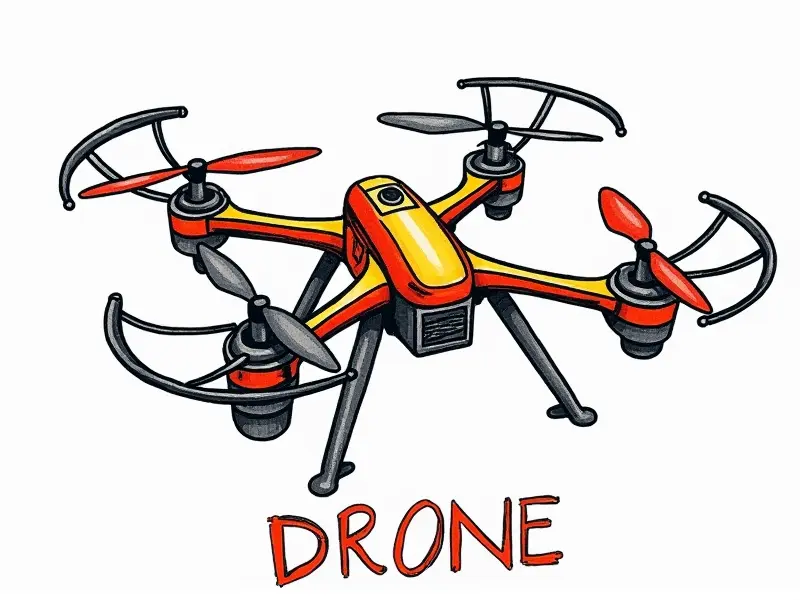RC helicopter frequency?

Beginner's Guide to RC Helo Frequencies
Welcome to the world of radio-controlled (RC) helicopters! One of the first things you'll need to understand is the concept of frequencies. In this guide, we will explore what frequencies are and why they matter in the context of RC helos.
What Are RC Helicopter Frequencies?
Frequencies refer to the specific radio waves used by your RC helicopter's transmitter and receiver for communication. Each frequency is unique, allowing multiple helicopters to operate simultaneously without interference.
Common RC Helicopter Frequencies Explained
The most common frequencies used in RC helos are 2.4GHz and 72MHz. These bands offer different advantages depending on your needs and the environment you fly in.
2.4GHz Frequency Band
- Advantages: This band offers a wide range of channels, reducing interference risk and providing better signal quality.
- Disadvantages: It can be crowded in urban areas due to the high number of devices using this frequency.
72MHz Frequency Band
- Advantages: Less prone to interference from other electronic devices, making it ideal for beginners and outdoor flying.
- Disadvantages: Limited number of channels compared to 2.4GHz.
Optimal Frequency Range for RC Choppers
The optimal frequency range depends on your specific needs, such as the environment you fly in and the type of helicopter you own. For instance, if you frequently fly indoors or in urban areas with many electronic devices, 2.4GHz might be more suitable.
Indoor Flying
For indoor flying, a frequency that minimizes interference from other electronics is crucial. The 72MHz band can be an excellent choice for this purpose.
Outdoor Flying
In outdoor settings, the 2.4GHz band offers better range and fewer obstacles to signal transmission, making it ideal for larger flying areas.
Avoiding Interference in RC Helos
Interference can significantly impact your RC helicopter's performance. Here are some tips to avoid interference:
- Choose a Less Crowded Frequency Band: Opt for 72MHz if you're flying in an area with many electronic devices.
- Select a Different Channel: Use a frequency channel that is not commonly used by other pilots nearby.
RC Helicopter Transmission Frequencies
The transmission frequencies of your RC helicopter are crucial for ensuring smooth operation. Understanding the different bands and channels will help you make an informed decision when choosing your equipment.
Understanding RC Helicopter Channels
A channel is a specific frequency within a band that your transmitter uses to communicate with the receiver. More channels mean less chance of interference from other pilots using similar frequencies.
Choosing the Right Frequency for RC Heli
Selecting the right frequency depends on several factors, including flying environment, personal preference, and helicopter type. Here are some considerations:
- Flying Environment: Urban areas might require a less crowded band like 72MHz.
- Helicopter Type: Some helicopters come pre-programmed with specific frequencies that work best for their design and performance.
Top Tips for Frequency Selection
- Research Local Regulations: Check if there are any local regulations regarding RC frequency usage.
- Consult Experienced Pilots: Seek advice from more experienced pilots who can provide insights based on their experience.
RC Helicopter Interference Solutions
If you encounter interference, here are some solutions to consider:
- Change Channels: Switch to a less crowded channel within your chosen frequency band.
- Use Signal Boosters: Install signal boosters or antennas to improve signal strength and range.
How to Change RC Helicopter Frequency
Changing the frequency of your RC helicopter is a straightforward process. Here’s how you can do it:
- Consult Your Manual: Refer to your user manual for specific instructions on changing frequencies.
- Select New Frequency: Choose an unused channel within the recommended frequency band.
- Synchronize Transmitter and Receiver: Ensure both devices are set to the same frequency before flying.
Top Tips for RC Helicopter Frequencies
To get the most out of your RC helicopter, here are some additional tips:
- Test Before Flying: Always test your setup in a controlled environment to ensure everything is working correctly.
- Keep Equipment Clean: Regularly clean and maintain your transmitter and receiver to prevent signal degradation.
RC Helicopter Radio Frequency Guide
This guide provides an overview of the key aspects related to RC helicopter frequencies. By understanding these concepts, you can ensure smoother operations and a more enjoyable flying experience.
Conclusion
Mastery over your RC helicopter's frequency is crucial for optimal performance and enjoyment. Whether you're a beginner or an experienced pilot, knowing how to select the right frequency and avoid interference will enhance your flying experience significantly. Happy flying!

